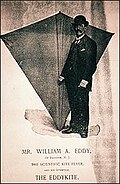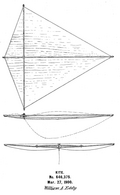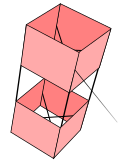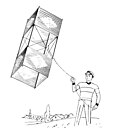AY Honors/Kites/Answer Key
1. When were kites first made and flown? Name at least three ways kites have helped in scientific research and tell how each has affected the world we live in. Tell the story of Benjamin Franklin and his kite.
Approximately 2600 years ago the kite was first invented and popularized in China, where materials ideal for kite building were readily available: silk fabric for sail material, fine, high-tensile-strength silk for flying line, and resilient bamboo for a strong, lightweight framework. The kite was said to be the invention of the famous 5th century BC Chinese philosophers Mozi (470-391 BC) and Lu Ban. By at least 549 AD paper kites were being flown, as it was recorded in that year that a paper kite was used to carry a message for a rescue mission. It is almost certain that the first kites flown were in the Orient or East Indian Islands where large leaves grow. As late as the year 1900 AD the villagers of Mutun on the island of Sumatra were using the dry leaves of the moon orchid to fly their fishing lines out into the deeper water of the bay to catch bigger gar. They strengthened the leaf with thin twigs and flew it on a three legged bridle in a similar fashion to the Korean kite. Korea borders China on its northern boundary. Interestingly the Korean kite is rectangular and the left hand simplified Chinese character for kite is similar to the Korean kite as seen from the flyer. It even shows the X spars and outline.
Scientific Advances
In 1749, Scottish scientist Alexander Wilson used several kites, attached in a train, i.e., one above the other, to measure and compare air temperature at different altitudes.
The Wright Brothers experimented with kites and contributed to development of the airplane.
Samual Cody (born Samual Cowdery in Iowa) experimented with man lifting kites and in 1905 flew a glider. During the 1914-1918 he designed man lifting observation kites for the British army.
In the summer of 1997, researchers launched parafoil kites into the night-time sky. Radio-microphones were suspended beneath the kites at three different locations, each separated by 300 meters. This enabled the scientists to simultaneously eavesdrop at different altitudes. These studies have enabled scientists to gain new information into the world of bats.
Kites equipped with airborne cameras can be used to map archaeological sites or to inexpensively monitor areas where erosion, sedimentation, deforestation, or construction are rapidly changing the landscape.
Ben Franklin's Kite
In June 1752, in what is the most famous of kite experiments, the American inventor and statesman Benjamin Franklin, with the aid of his son, lofted a flat kite fitted with a pointed wire and silk sail on a hemp line during a thunderstorm. Somehow both father and son avoided electrocution as a metal key attached to the flying line became electrified. Franklin proved that lightning was the natural phenomenon called electricity, not the wrath of the gods. One immediate and practical outcome of the experiment was Franklin's invention of the lightning rod.
On October 19 in a letter to England explaining directions for repeating the experiment, Franklin wrote:
- "When rain has wet the kite twine so that it can conduct the electric fire freely, you will find it streams out plentifully from the key at the approach of your knuckle, and with this key a phial, or Leiden jar, maybe charged: and from electric fire thus obtained spirits may be kindled, and all other electric experiments [may be] performed which are usually done by the help of a rubber glass globe or tube; and therefore the sameness of the electrical matter with that of lightening completely demonstrated."
2. Name some of the ways that kites might be used today.
Kites are used today for the following:
- Predicting weather (carrying aloft meteorological instruments).
- Carrying loads of water
- Spaceflight (during the recovery of space vehicles)
- Pulling ships at sea
- Recreation (kite surfing and skateboarding)
3. Explain briefly how kites fly.
The kites get a lift from the wind in the sky. The same current of air keeps them in flight up on the sky. The higher the kite gets the stronger the current usually gets and the longer your kite will stay up in the air. Flying Kites is something that people enjoy all over the world! Air has weight. When a current of air hits an obstruction this weight is known as force. A kite; at the correct angle to the airstream has this force translated into lift and drag. This angle is about 12 degrees and is the angle at which an airplane wing is most efficient.
4. Define the following terms:
- a. Spine(s)
- The center rod, or other rods that run lengthwise down a kite. May also be called a longeron. Sled kites and Conyne deltas have more than one.
- b. Spars
- The sticks used as the frame of a kite.
- c. Vent
- The vent re-directs the airflow over the sail and may help to lift or stabilize the direction of the kite.
- d. Bowstring
- The bowstring is tied from each end of a spar, making the spar bow-shaped, and gives the kite its dihedral
- e. Cover
- Or sail; the cloth or lifting part of a kite.
- f. Frame
- The frame makes the shape of the kite
- g. Tail
- The tail is a length of material such as cotton, nylon or plastic which is attached to the kite for visual effect or to cause drag (on a single line kite) that helps with directional stability.
- h. Keel
- The keel is a triangular piece of cloth used in lieu of or as well as a bridle. It helps with directional stability just like the keel of a boat.
- i. Flying line
- Or Tether What a person holds on to, to control the kite. The link between the kite and the ground.
- j. Bridle
- Lines that form the junction between kite and flying line. The bridle transmits the commands of the pilot to the kite. The bridle may also be the means of giving shape to the kite, in the case of soft kites.
- k. Reel
- The reel contains, and is used to let out or retrieve, the flying line.
- l. Dihedral
- Dihedral is the angle formed by the lateral extremities of the kite to the horizontal; and stabilizes the line of flight.
5. What is a common cause of kite failure?
- Lack of wind.
- Too strong a wind.
- Trees or other obstacles causing turbulence.
- Essential parts of the kite or line breaking (e.g., too powerful a wind can break spars or the kite string).
6. What should be done when a kite loops during flight?
The usual causes of a kite looping are:
- Not enough di-hedral.
- Poorly bridled.
- Poorly balanced.
- Too much wind.
If the kite starts to misbehave when already aloft the problem is most likely to be too much wind. Release tension on the line and try to pull the kite diagonally out of the wind-window and closer to you. The closer you have it, the more control of it you will have too. Most importantly you must keep the kite under your control.
7. Why is a tail sometimes needed on a kite?
A kite's tail is used to add stability to the kite and keep it facing into the wind. If there is enough di-hedral this will then prevent the kite from looping. The length of a tail should be from six to nine times the length of the kite body. Some put them on the kite so that when in the air it will wave along the wind - for decoration.
8. Know at least three safety rules for kite flying.
- Never fly a kite when it's raining and lightning - lightning can kill or cause serious burns.
- Do not fly a kite near roads, or cars - distracting a car driver is dangerous, you could cause an accident.
- Do not fly near power lines - you could be killed by an electric shock.
- Do not fly near people or animals - the spine is an arrow traveling at up to 90 MPH.
- Keep away from buildings and trees - trees eat kites!
9. Do the following:
a. Correctly wind line on a stick.
Here are a couple of external links, while we try to figure out:
- http://www.expertvillage.com/video/3991_winding-kite-string.htm
- http://www.ehow.com/video_4412142_how-wind-kite-string.html
b. Tie broken ends with the fisherman's knot.
Adventist Youth Honors Answer Book/Knot/Fisherman's bend
10. Make and successfully fly two of the following kites:
Here are several links to making different types of kites. Go have fun!
a. Sled kite
The sled kite was invented and patented by the American, William Allison in the 1950s. This kite helped pave the way for a class of kites known as "semi-rigid."
b. Flat kite
c. Two-stick diamond kite
Diamond kites (see Eddy kites, but distinguish). Diamonds types appear from mini to very large, from low-cost beginner utility to high quality state-of-the art large target control diamonds.
- http://www.skratch-pad.com/kites/make.html
- http://www.diynetwork.com/diy/hobbies/article/0,2033,DIY_13951_2273218,00.html
d. Delta wing kite
- External Site to make Delta Wing Kite - http://www.kitemonger.com/kiteplan/sbd/index.html
e. Eddy or Malay kite
The Malay kite is a model of tailless kite. First introduced to the West in a New York newspaper article from October 1894, the Malay kite was used for recreation for centuries before this in parts of the Far East. The article detailed how a university professor ("Clayton") had erected a series of kites and bound them all together to one kite. These kites had no tail, were bowed and diamond shaped, and were referred to by the article writer as "Malay kites". However, the existence of a Malay-like design may have already been heard of in the United States sometime before the publishing of the article; in the last edition of the American Boy's Handy Book, another tailless kite is described (there referred to as a "Holland" kite). The description of this kite, which was to be included as a chapter in the book, was sent in to the author sometime around 1882, eleven years before the Malay kite was mentioned in the newspaper.
f. Box kite
A box kite is a high-performance kite, noted for developing relatively high lift. The typical design has four parallel struts. The box is made rigid with diagonal crossed struts. There are two sails, or ribbons, whose width is about a quarter of the length of the box. The ribbons wrap around the ends of the box, leaving the ends and middle of the kite open. In flight, one strut is the bottom, and the bridle is tied between the top and bottom of this strut. The dihedrals of the sails help stability.
- This one's a bit involved - http://www.howtomakeandflykites.com/kites-to-make/the-box-kite.html
g. Tetrahedral kite
A tetrahedral kite is a multi-celled rigid box kite composed of tetrahedrally shaped cells. The cells are usually arranged in such a way that the entire kite is also a regular tetrahedron. The kite can be described as a compound dihedral kite as well.
This kite was created by Alexander Graham Bell. It came about from his experiments with Hargrave's Box Kites and his attempts to build a kite that was big enough to carry both a man and a motor. Bell wrote about his discovery of this concept in the National Geographic June 1903 issue; the article was titled "Tetrahedral Principle in Kite Structure".
This style kite, while not an easy kite to make compared to the simple cross kite, is a very stable kite and is easy to fly. It flies well in moderate to heavy winds if it is properly set up.
- http://www.instructables.com/id/Tetrahedral-Kite/
- http://www.cit.gu.edu.au/~anthony/kites/tetra/straw_plan/





